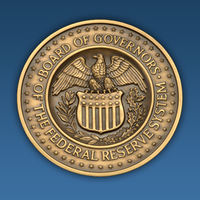The Federal Reserve's Workforce Reduction: A Strategic Shift
May 19, 2025, 3:33 am

Location: United States, Kansas, Winfield
Employees: 1001-5000
Founded date: 2011
Total raised: $820K
The Federal Reserve is set to trim its workforce by 10% over the next few years. This decision, announced by Chair Jerome Powell, reflects a broader trend of downsizing within the U.S. government. The Fed, which currently employs around 24,000 people, aims to bring that number below 22,000. The plan includes a voluntary deferred resignation program for eligible employees, particularly those nearing retirement.
This move is not just about numbers. It’s a strategic recalibration. The Fed is responding to changing priorities and external pressures. Powell emphasized the importance of periodically reassessing staffing and resources. It’s like pruning a tree. Remove the dead branches to allow new growth.
The backdrop of this decision is significant. The Trump administration has been pushing for efficiency across federal agencies. Elon Musk’s Department of Government Efficiency (DOGE) has been a driving force behind this initiative. Musk has labeled the Fed as “absurdly overstaffed.” While Powell’s memo didn’t mention Musk directly, the influence is palpable. The Fed is not immune to the winds of political change.
Historically, the Fed has adjusted its workforce in response to economic conditions. In the 1990s, during Bill Clinton’s presidency, similar cuts were made. The Fed is now revisiting that playbook. Powell’s memo suggests a deliberate and conscientious approach. The goal is to ensure that the Fed remains mission-focused and efficient.
The voluntary resignation program is a key component of this strategy. It targets employees who are eligible to retire by the end of 2027. This approach minimizes disruption. It avoids the negative fallout of involuntary layoffs. Employees can choose to leave on their terms, which softens the blow of downsizing.
The Fed’s decision comes at a time when the economy is under scrutiny. Inflation, interest rates, and economic growth are all in the spotlight. The central bank must balance its dual mandate: promoting maximum employment and stabilizing prices. A leaner workforce could enhance its ability to respond to these challenges. Efficiency can lead to agility.
However, the implications of this reduction extend beyond the Fed itself. It reflects a broader cultural shift within the federal government. The emphasis on efficiency and cost-cutting is reshaping how agencies operate. This trend could set a precedent for other federal entities. If the Fed can streamline operations, why can’t others?
Critics may argue that reducing staff could impact the quality of work. The Fed’s reputation for being a nonpolitical, high-quality institution is at stake. Powell has assured that any changes will prioritize the Fed’s mandates. The focus will remain on delivering effective and unbiased services. The challenge lies in maintaining quality while trimming the fat.
The announcement has already sparked discussions among economists and policymakers. Some view it as a necessary step toward modernization. Others worry about the potential loss of institutional knowledge. The Fed is a complex organization. Each employee plays a role in its intricate machinery. Losing experienced staff could create gaps.
As the Fed embarks on this journey, it must navigate these waters carefully. Communication will be key. Transparency about the process and its rationale will help mitigate concerns. Employees need to feel secure in their roles, even as changes loom.
The timing of this announcement is also noteworthy. It comes as the economy faces uncertainties. Rising interest rates and inflation are pressing issues. The Fed’s ability to adapt is crucial. A streamlined workforce could enhance its responsiveness to economic shifts.
In conclusion, the Federal Reserve’s decision to reduce its workforce by 10% is a significant move. It reflects a commitment to efficiency and adaptability. As the central bank navigates this transition, it must balance the need for cost-cutting with the imperative of maintaining quality. The road ahead will require careful planning and execution. The Fed is not just trimming staff; it’s redefining its future. The stakes are high, and the outcome will shape the institution for years to come.
This move is not just about numbers. It’s a strategic recalibration. The Fed is responding to changing priorities and external pressures. Powell emphasized the importance of periodically reassessing staffing and resources. It’s like pruning a tree. Remove the dead branches to allow new growth.
The backdrop of this decision is significant. The Trump administration has been pushing for efficiency across federal agencies. Elon Musk’s Department of Government Efficiency (DOGE) has been a driving force behind this initiative. Musk has labeled the Fed as “absurdly overstaffed.” While Powell’s memo didn’t mention Musk directly, the influence is palpable. The Fed is not immune to the winds of political change.
Historically, the Fed has adjusted its workforce in response to economic conditions. In the 1990s, during Bill Clinton’s presidency, similar cuts were made. The Fed is now revisiting that playbook. Powell’s memo suggests a deliberate and conscientious approach. The goal is to ensure that the Fed remains mission-focused and efficient.
The voluntary resignation program is a key component of this strategy. It targets employees who are eligible to retire by the end of 2027. This approach minimizes disruption. It avoids the negative fallout of involuntary layoffs. Employees can choose to leave on their terms, which softens the blow of downsizing.
The Fed’s decision comes at a time when the economy is under scrutiny. Inflation, interest rates, and economic growth are all in the spotlight. The central bank must balance its dual mandate: promoting maximum employment and stabilizing prices. A leaner workforce could enhance its ability to respond to these challenges. Efficiency can lead to agility.
However, the implications of this reduction extend beyond the Fed itself. It reflects a broader cultural shift within the federal government. The emphasis on efficiency and cost-cutting is reshaping how agencies operate. This trend could set a precedent for other federal entities. If the Fed can streamline operations, why can’t others?
Critics may argue that reducing staff could impact the quality of work. The Fed’s reputation for being a nonpolitical, high-quality institution is at stake. Powell has assured that any changes will prioritize the Fed’s mandates. The focus will remain on delivering effective and unbiased services. The challenge lies in maintaining quality while trimming the fat.
The announcement has already sparked discussions among economists and policymakers. Some view it as a necessary step toward modernization. Others worry about the potential loss of institutional knowledge. The Fed is a complex organization. Each employee plays a role in its intricate machinery. Losing experienced staff could create gaps.
As the Fed embarks on this journey, it must navigate these waters carefully. Communication will be key. Transparency about the process and its rationale will help mitigate concerns. Employees need to feel secure in their roles, even as changes loom.
The timing of this announcement is also noteworthy. It comes as the economy faces uncertainties. Rising interest rates and inflation are pressing issues. The Fed’s ability to adapt is crucial. A streamlined workforce could enhance its responsiveness to economic shifts.
In conclusion, the Federal Reserve’s decision to reduce its workforce by 10% is a significant move. It reflects a commitment to efficiency and adaptability. As the central bank navigates this transition, it must balance the need for cost-cutting with the imperative of maintaining quality. The road ahead will require careful planning and execution. The Fed is not just trimming staff; it’s redefining its future. The stakes are high, and the outcome will shape the institution for years to come.
